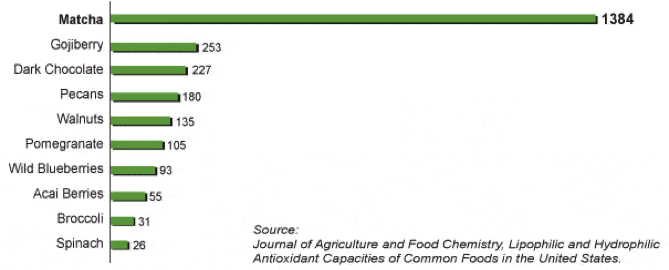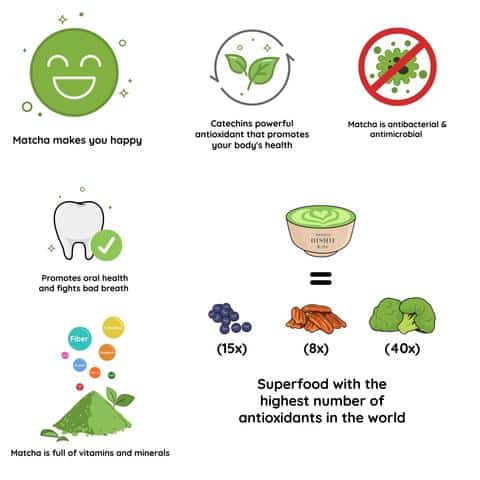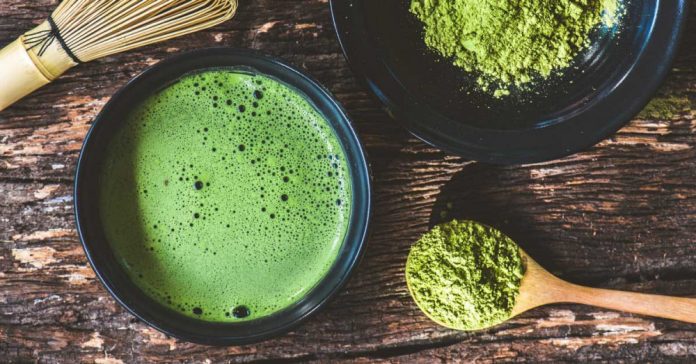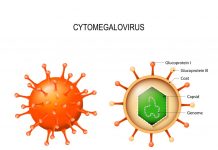Matcha tea, a powdered Japanese green tea, is traditionally used in Japanese tea ceremonies. Green tea powder is now popular in the west as an antioxidant supplement.
Traditional matcha tea, also spelled macha or maccha, is produced every spring in Japan from shade-grown leaves of the tea plant Camellia sinensis. Artificial shading requires the plants to struggle and compete for available sunlight, resulting in thinner, softer buds containing a higher concentration of the light-capturing molecule chlorophyll.
Japanese Green Tea has Nutritional Antioxidants

In early May, young tea leaves are harvested by hand and individually selected for further processing. The leaves are then steamed at high temperatures for 20-30 seconds. The heat halts the activity of enzymes responsible for oxidization and fermentation and allows the leaf to maintain its natural green color. Enzymatic activity is also responsible for converting the beneficial polyphenols into less healthy compounds. Because the steaming process stops this enzymatic reaction shortly after harvest, tea leaves used to make matcha tea powder retain all their nutritional polyphenols and antioxidants.
Matcha Tea Powder Contains a Whole Processed Japanese Green Tea Leaf

After the green tea leaves have been steamed, they are dried in a temperature controlled environment. If the tea leaves were to be rolled and shaped, the premium loose leaf tea gyokuro would be produced. Instead, matcha tea leaves are de-stemmed and de-veined by blowing the leaves through a wind tunnel, separating the delicate inner leaf from the tougher structural material.
The remaining tea particles are slowly and meticulously stone ground into a super-fine green tea powder. Stone grinding reduces the destruction of healthy nutrients and ensures that heat generated by friction is not severe enough to damage the delicate flavor and texture of the tea powder.
What are the Health Benefits of Matcha Green Tea

Unlike ordinary green tea, where the rolled leaves are seeped in hot water to release their nutritionally beneficial antioxidants, matcha tea powder is traditionally whisked into hot water and consumed directly. This allows all of the antioxidants to enter the body, not just those that diffuse into water.
Matcha green tea powder is a major source of epigallocatechin gallate (EGCG), a powerful flavanoid that continues to be studied for its role in cancer prevention as well as for its anti-inflammatory properties, ability to bind free radicals and lower both blood pressure and cholesterol levels.
In addition to being drunk in the traditional manner, powdered green tea can be used to make designer beverages such as green tea lattes, can flavor confections such as ice cream and frosting, or be baked into desserts such as Matcha Green Tea Cupcakes.
Certain compounds in green tea may interact with some prescription medications, so individuals who wish to receive the health benefits of matcha green tea or green tea extracts should discuss this decision with their physician or health care professional.


















